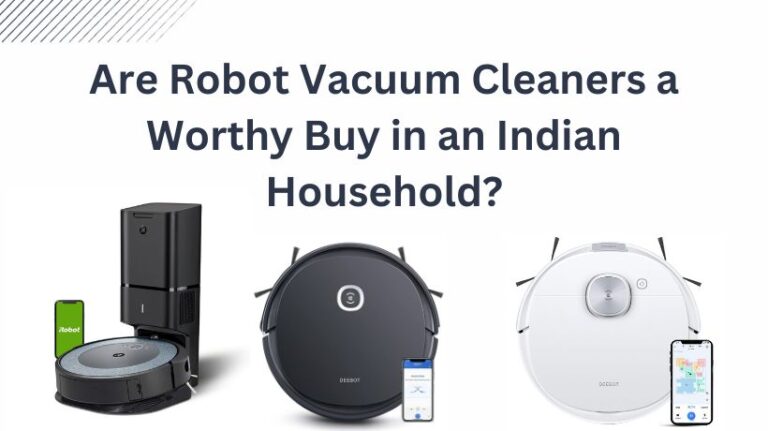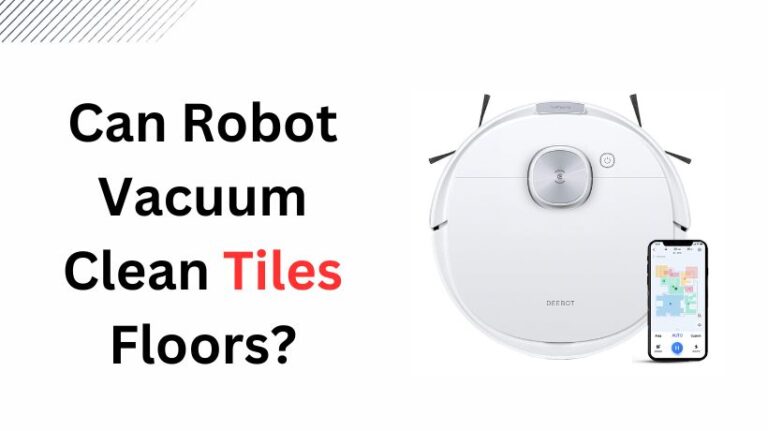In the rapidly evolving landscape of smart home technology, one of the standout innovations is the integration of Lidar (Light Detection and Ranging) navigation in robot vacuum cleaners. This sophisticated technology has revolutionized the way these automated devices navigate and clean spaces, providing efficiency, precision, and adaptability that were once unimaginable.
In this article, we will delve into the intricacies of Lidar navigation, exploring how it works, its benefits, and the impact it has had on the evolution of robot vacuum cleaners.
Table of Contents
ToggleWhat is Lidar Navigation in Robot Vacuum Cleaner?
Lidar navigation in a robot vacuum cleaner involves the use of Light Detection and Ranging technology. The device emits laser beams, measures the time it takes for them to reflect off objects, and creates a real-time map of the cleaning environment. This map enables precise navigation, obstacle avoidance, and optimized cleaning paths, enhancing the efficiency and adaptability of the robot vacuum cleaner. Lidar technology has revolutionized the way these devices operate, providing accuracy, autonomy, and improved user experiences.
Understanding Lidar Technology
Lidar is a remote sensing technology that utilizes laser light to measure distances with high precision. The basic principle involves emitting laser beams and measuring the time it takes for the light to travel to an object and back, allowing the calculation of distances accurately. In the context of robot vacuum cleaners, Lidar is employed to create a detailed map of the cleaning environment.
How Lidar Navigation Works in Robot Vacuum Cleaners
Emission of Laser Beams: Lidar-equipped robot vacuum cleaners are equipped with small, rotating laser emitters. These emitters emit laser beams in various directions, covering a 360-degree field around the device.
Reflection and Time-of-Flight Measurement: When these laser beams encounter obstacles or surfaces in the environment, they reflect back to the Lidar sensor. The sensor then measures the time it takes for the laser beams to travel to the object and return. This time-of-flight information is crucial for determining the distance between the robot and the object.
Creating a Detailed Map: As the robot moves around the space, continuously emitting and receiving laser beams, it builds a real-time map of the environment. This map includes information about the location and dimensions of objects, furniture, walls, and any other obstacles present.
Localization and Path Planning: Lidar navigation is not just about mapping; it also involves localization and path planning. The robot uses the map generated by Lidar to determine its own position in the environment. With this information, it can efficiently plan its cleaning path, avoiding obstacles and covering the entire space systematically.
Benefits of Lidar Navigation in Robot Vacuum Cleaners
Precision and Accuracy: Lidar technology provides unparalleled precision and accuracy in mapping and navigation. This allows robot vacuum cleaners to navigate through complex environments, avoiding obstacles with precision and ensuring thorough cleaning.
Adaptability to Dynamic Environments: One of the remarkable features of Lidar navigation is its adaptability to dynamic environments. As the robot continuously updates its map in real-time, it can seamlessly adapt to changes in the environment, such as moving furniture or temporary obstacles.
Efficient Cleaning Paths: Lidar-equipped robot vacuum cleaners optimize their cleaning paths based on the real-time map they create. This results in more efficient cleaning patterns, reducing redundancy and ensuring that every part of the space is covered.
Improved Battery Efficiency: The efficiency of Lidar navigation contributes to better battery management. With optimized cleaning paths and accurate navigation, robot vacuum cleaners can cover larger areas on a single charge, making them more practical for diverse living spaces.
Reduced Collision Risks: Lidar technology significantly reduces the risk of collisions. The precise mapping and real-time obstacle avoidance capabilities ensure that the robot navigates smoothly without bumping into furniture or other objects.
Enhanced User Experience: Lidar-equipped robot vacuum cleaners offer a more user-friendly experience. The efficiency and reliability of Lidar navigation mean that users can trust their devices to clean autonomously without the need for constant supervision or intervention.
Impact on the Evolution of Robot Vacuum Cleaners
The integration of Lidar navigation marks a transformative phase in the evolution of robot vacuum cleaners. Earlier generations of these devices relied on simpler navigation technologies, such as infrared sensors and bumpers, which were less accurate and prone to limitations. Lidar has addressed many of these challenges, ushering in a new era of intelligent and adaptive cleaning robots.
From Random to Systematic Cleaning: Traditional robot vacuum cleaners often followed a random cleaning pattern, relying on sensors to detect obstacles and change direction. Lidar navigation enables a more systematic approach, allowing robots to follow optimized paths, covering the entire space efficiently.
Adaptive Cleaning Strategies: With Lidar, robot vacuum cleaners can adapt their cleaning strategies based on the environment. They can recognize and navigate around different types of obstacles, adjusting their approach to ensure a thorough and efficient cleaning process.
Mapping and Memory: Lidar-equipped robots not only clean more efficiently but also possess the ability to remember the layout of the environment. This memory enables them to navigate more swiftly during subsequent cleaning cycles, as they already have knowledge of the space.
Integration with Smart Home Ecosystems: The evolution of robot vacuum cleaners extends beyond just cleaning capabilities. Lidar-equipped devices often integrate with smart home ecosystems, allowing users to control and monitor them through smartphone apps. Some models even support voice commands through virtual assistants.
Enhanced Obstacle Avoidance: Lidar technology has significantly enhanced obstacle avoidance capabilities. Robot vacuum cleaners can detect and navigate around smaller objects, intricate furniture arrangements, and even low-lying obstacles, ensuring a seamless cleaning process.
Market Trends and Consumer Preferences: The introduction of Lidar navigation has influenced consumer preferences in the robot vacuum cleaner market. Consumers are now more inclined to choose devices that offer advanced navigation capabilities, recognizing the value of efficiency, precision, and adaptability.
Challenges and Future Developments
While Lidar navigation has undeniably elevated the capabilities of robot vacuum cleaners, challenges still exist. Cost remains a significant factor, as Lidar-equipped devices tend to be more expensive than their counterparts with simpler navigation systems. However, ongoing advancements in technology and manufacturing processes are expected to address this issue, potentially making Lidar more accessible to a broader consumer base.
Future developments in Lidar technology for robot vacuum cleaners may include improvements in sensor miniaturization, increased range and resolution, and integration with other sensing modalities. These advancements could further enhance the devices’ ability to navigate in a variety of environments, including those with challenging layouts or varying floor surfaces.
Conclusion
Lidar navigation has emerged as a game-changer in the realm of robot vacuum cleaners, elevating these devices from simple cleaning tools to intelligent, adaptive, and efficient household companions. The precision, accuracy, and adaptability afforded by Lidar technology have transformed the cleaning experience, making it more convenient and user-friendly.
As technology continues to advance, we can expect further refinements in Lidar navigation, leading to even more capable and versatile robot vacuum cleaners. The impact of Lidar goes beyond just the cleaning domain, influencing the broader landscape of smart home technology and automation. In the years to come, Lidar-equipped robot vacuum cleaners are likely to play a pivotal role in shaping the future of home maintenance and the integration of robotics into everyday life.




